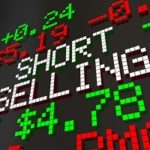Copy trading is a type of investing where you mirror the trades of someone else. However, with the proliferation of social media scams, is copy trading safe, can it make you money and what do you need to be mindful of? In this guide I explain what copy trading is and if it’s a legitimate form of investing.
What is copy trading?
Basically, if you want to trade but don’t know what to buy or sell, you can opt to copy someone else’s trades. I suppose it is technically a sort of investment because you are buying into a trader in the same way you invest with a fund manager or ETF.
however, the main difference is that ETFs are traded on exchange and are often highly liquid with appropriate volatility. Fund managers are regulated and are bound by a strict set of investment criteria. With copy trading, you are trusting your investments with an unregulated individual who can invest or trade in what they want, whenever the mood takes them with little to no oversight.
History of copy trading
Copy trading has been around for decades, it was first introduced to the mainstream by Covestor in the US (now owned by Interactive Brokers) as a way for lay-asset managers to publically display their portfolios and have private investors copy their portfolios.
Saxo Markets also entered the copy trading sector with Tradingfloor.com (where I actually run a live portfolio based on our long/short portfolios at Investors Intelligence).
I also remember Currensee.com, which was one of the first to introduce copy trading on the forex market (now owned by OANDA).
Obviously, one of the most popular copy trading platforms is eToro. They have worked really hard to establish copy trading as an asset class in a regulated environment. Overall, they have done a great job of making it easy for people to copy a portfolio. Most of the “popular investors” that people can copy have a five-year-plus track record of running a profitable portfolio. You can read more about this in our eToro review.
Is copy trading profitable?
Copy trading can be profitable, but only if you pick the right trader to copy. The majority of traders lose money, and past performance is no reflection of future results. So, even if a trader has done well in the past, they may not do so well in the future.
Copy trading is particularly important at the moment as we have been in a bull market for some time. Many successful investors have simply bought into the major S&P 500 tech companies, ETFs or themes and done well without much timing. The true test of copy trading’s worth will be what happens in a bear market or if traders can run profitable long/short portfolios.
This is a good lesson. Sometimes the best investment strategy is to just buy into the market as a whole and hold. Stock markets are essentially designed to go up in the long-term albeit with a few dips along the way. Which are, incidentally, quite a good time to buy in.
Copy trading can also be very profitable for the people whose traders are being copied, as they can make money by either referring customers to brokers to follow their trades and/or earn a percentage of the value of the funds that are following them.
This actually brings me on quite nicely to my next point, copy-trading scams!
Copy trading scams
There is a darker side to copy-trading. An unregulated, cesspit of scammers and charlatans. Copy trading scams are rife at the moment. This is mainly due to social media and off-shore unregulated brokers and definitely the wild-west of crypto.
Copy trading scams work like this.
Off-shore and unregulated brokers or copy trading platforms will pay people a fee for introducing customers who deposit money*.
One of the most common investment scams at the moment is to present yourself as a successful trader on social media and tell people that you made all your money from trading. Then out of the kindness of your heart, you may offer to “teach people how to trade like you”.
This is usually in the form of social media videos showing expensive cars, watches, houses and properties. In many cases, these are rented, but in some cases, the scammer does own them. Not from successful trading, but from earning money from fooling people into copying their trading.
A scammer will say they do it for free – which is quite a hook, as people don’t feel as though they are being scammed directly. In most cases, these scammers will refer you to a broker that is legit, but unregulated in the UK. Because, if a broker is regulated in the UK, their compliance department would not let them pay affiliates who are clearly scammers (other regions are not quite so discerning).
So, people are opening accounts with real brokers and depositing their funds (sort of) safely. The individual comes across as legit because they are not asking for payment directly. The broker will then pay the scammer for introducing the trader. It doesn’t matter to the broker if they make or lose money, some b-book, some charge commission and some are just on a customer grab. Horrifically, some brokers are just outright scammers themselves and use the lead to scam an introduced client further.
Once a trader has been introduced, there is usually a deposit or number of trades threshold that a referred customer must fulfil before a payment to the scammer is triggered. Copy trading exasperates this because once you are hooked up to copy scammer traders, you are trading to generate commission or client losses.
Neither the broker paying a copy-trading scammer nor the scammer care if you make or lose money copying their trades.
Are there any legitimate copy-trading platforms?
Yes, they are called fund managers, investment trusts, ETFs, OEICs and index trackers. They are all regulated by the FCA or listed on the London Stock Exchange. When you buy into them you are following the investing ideas of professional portfolio managers.
Ok, that’s a bit facetious, eToro for example is regulated in the UK and there are some very successful portfolios that you can copy. But beware, when you copy a portfolio you are essentially copying an unregulated money manager.
Having said that, even some of the biggest investment trusts have lost people money because they’ve gone rouge. Cough, cough, Woodford.
Is copy trading a good idea?
Personally, I think copy trading seems daft. Trading is for when you think you are right and want to take a position accordingly. It’s a high-risk form of investment, where you should only really allocate a small percentage of your portfolio. Your fun money as it were. Where’s the fun, in letting someone else trade for you?
Copy trading is like going to the pub and asking someone to drink your beer.
So what’s the lesson?
Diversify, diversify, diversify – don’t put all your eggs in one basket, never trust anything that seems to good to be true. Trust your own judgement, make your own decisions, and remember, it’s your money.
*Full disclosure here, we also have introducing agreements, but only work with fully regulated brokers we have tested, reviewed and interviewed the CEO.

Richard is the founder of the Good Money Guide (formerly Good Broker Guide), one of the original investment comparison sites established in 2015. With a career spanning two decades as a broker, he brings extensive expertise and knowledge to the financial landscape.
Having worked as a broker at Investors Intelligence and a multi-asset derivatives broker at MF Global (Man Financial), Richard has acquired substantial experience in the industry. His career began as a private client stockbroker at Walker Crips and Phillip Securities (now King and Shaxson), following internships on the NYMEX oil trading floor in New York and London IPE in 2001 and 2000.
Richard’s contributions and expertise have been recognized by respected publications such as BusinessInsider, Yahoo Finance, BusinessNews.org.uk, Master Investor, Wealth Briefing, iNews, and The FT, among many others.
Under Richard’s leadership, the Good Money Guide has evolved into a valuable destination for comprehensive information and expert guidance, specialising in trading, investment, and currency exchange. His commitment to delivering high-quality insights has solidified the Good Money Guide’s standing as a well-respected resource for both customers and industry colleagues.


